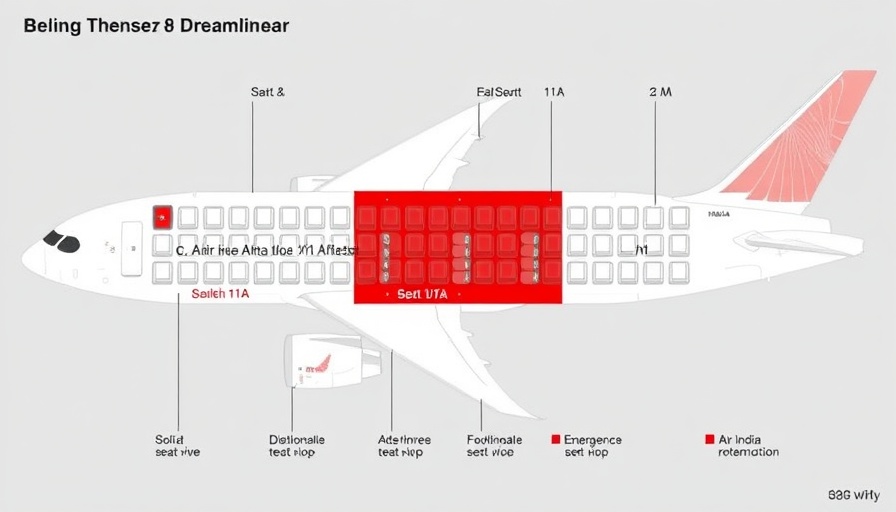
Miraculous Survival: The Extraordinary Tale of Vishwash Kumar Ramesh
In a shocking turn of events, the Air India flight AI171, which took off from Ahmedabad heading towards London, met with a catastrophic crash shortly after takeoff on June 12, 2025. Amid the devastation, one man emerged as the sole survivor—40-year-old British national Vishwash Kumar Ramesh, who was seated in 11A, a spot that would become pivotal for his survival.
The Crash: What Happened
The Boeing 787-8 Dreamliner was climbing steeply when it abruptly crash-landed into a residential building, which housed medical students. Reports indicate that many lives were lost, yet Ramesh managed to escape, albeit with severe injuries to his right hand. As he awoke amidst the chaos, he realized that he was alive and unbuckled his seat belt. His instincts kicked in as he sought to find a way out through the debris.
A Lesson in Seat Safety: The Implications of 11A
According to aviation experts, Ramesh's survival may be attributed to the specific location of his seat near an emergency exit. Ron Bartsch, chairman of AvLaw Aviation Consulting, noted that while proximity to exits generally increases survivability, this does not guarantee safety in all situations. The analysis of crash safety reveals that numerous factors contribute to outcomes during such disasters.
The Aftermath: Ramesh's Condition and Public Reaction
Upon being rescued, Ramesh was taken to a local hospital where he was considered disoriented but stable, recovering from multiple injuries. His story quickly made headlines, fueled by the tragic loss of life, sparking conversations around flight safety regulations and the variables influencing survival rates in air disasters.
Understanding the Risks: What the Experts Say
Mitchell Fox from the Flight Safety Foundation commented on the incident, asserting that every aviation accident is unique. Factors such as the severity of the impact, passenger preparedness, and aircraft design all contribute to the survival chances of individuals on board. The tragic event also reignites the debate on the safety of specific seating configurations during emergencies.
The Emotional Toll: How Survivors Cope
The emotional aftermath of surviving a plane crash can be profound. Survivors often grapple with anxiety and a myriad of psychological challenges. Ramesh, despite his injuries, has expressed gratitude for his survival, a sentiment likely shared by those who lost loved ones in this disaster. This incident may prompt discussions around post-traumatic recovery resources available to survivors and their families.
A Glimpse into Flight Safety Regulations
The tragedy raises significant questions regarding current flight safety protocols. The positioning of emergency exits relative to passenger seating on different aircraft models, alongside the maintenance of safety equipment, must be evaluated rigorously to enhance passenger safety. Stakeholders in aviation will likely call for stricter adherence to safety regulations in light of this event.
Looking Ahead: Future of Aviation Safety
As investigations into the crash unfold, there is hope that insights from this catastrophe will lead to improvements in flight safety measures. Experts urge airline companies and regulatory bodies to assess current practices to ensure that tragedies like the Air India crash do not occur again. By sharing Ramesh's experience, we understand the importance of proactive safety training for passengers and enhancements in aircraft technology.
 Add Element
Add Element  Add Row
Add Row 



Write A Comment